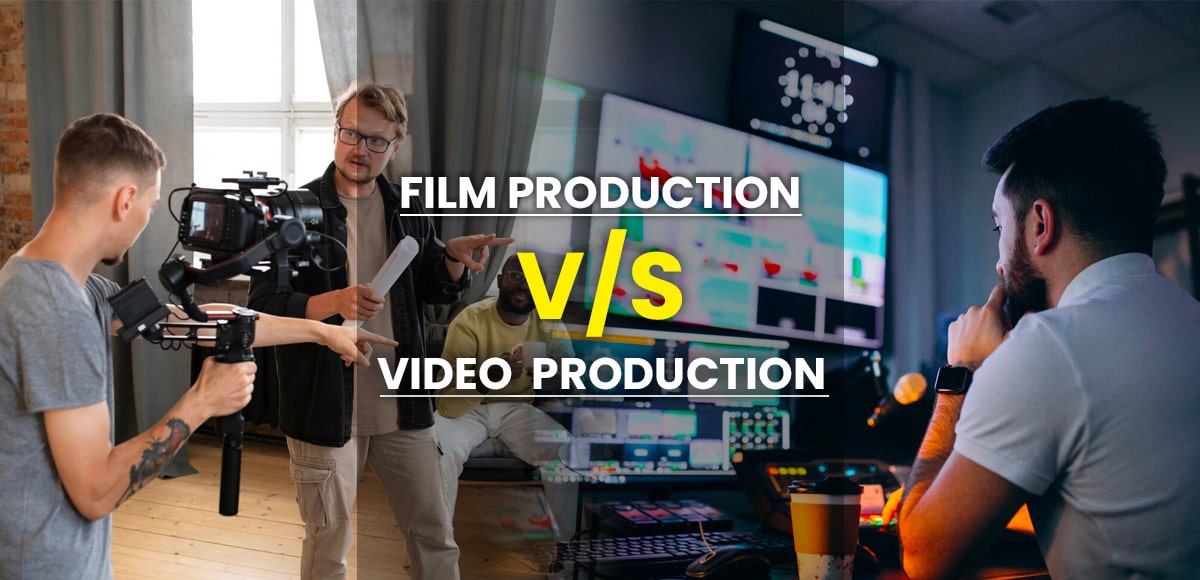
Film Production vs Video Production
Film production and video production are two closely related yet distinct processes in the world of visual storytelling. While both involve capturing moving images to convey a narrative, but different in terms of scale, purpose, and some technical aspects. The following chart provides a concise comparison between film production and video production, highlighting key differences in various aspects of the two processes.
| Aspect | Film Production | Video Production |
|---|---|---|
| Medium of Capture | Uses traditional film cameras or digital cameras capable of cinematic quality. | Primarily utilizes digital cameras, ranging from professional video cameras to consumer-grade devices. |
| Resolution | Often shot in high resolutions, such as 2K, 4K, or even 8K, providing exceptional image quality. | Typically ranges from standard definition (SD) to high definition (HD), with some projects utilizing 4K resolution. |
| Purpose and Scope | Primarily intended for cinematic release in theaters, with a focus on storytelling through narrative films. | Diverse applications, including marketing videos, documentaries, training videos, and online content, catering to a broad range of purposes. |
| Budget Requirements | Generally requires a significant budget for high-quality equipment, specialized crew, and post-production processes. | Can accommodate a wide range of budgets, from low-budget projects using consumer-grade equipment to high-budget productions with professional crews. |
| Production Timeline | Tends to have longer production timelines due to meticulous planning, complex post-production processes, and adherence to industry standards. | Often has shorter production timelines, allowing for quicker turnaround times, making it suitable for fast-paced industries like online content creation. |
| Crew Size | Involves larger crews, including specialized roles such as gaffers, key grips, and various department heads. | Crew size can vary widely, with smaller teams being common for smaller-scale projects, while larger productions may still have a significant crew. |
| Distribution Platform | Primarily released in theaters initially, followed by distribution through various channels like streaming services, DVDs, and television. | Distribution channels include online platforms, television, corporate websites, social media, and other digital mediums, with a focus on accessibility. |
| Editing Complexity | Editing processes are often complex, involving detailed color grading, visual effects, and sound design to achieve a cinematic look. | Editing may involve simpler post-production processes, but can still include effects, transitions, and sound enhancements, depending on the project's requirements. |
| Aesthetic Focus | Emphasizes cinematic aesthetics, including depth of field, film grain, and specific visual styles, contributing to a unique cinematic experience. | Aims for visual appeal but may prioritize practicality and efficiency, adapting to the specific needs of the project rather than adhering to a distinct cinematic style. |
| Examples | Hollywood blockbuster films, independent cinema, and film festival entries. | Online videos, corporate promotional videos, documentaries, training videos, and television broadcasts. |
Film and video production differ in purpose, scale, and distribution channels. Film production involves grand scale and high budgets, while video production is more versatile and adaptable. The choice depends on audience experience, distribution channels, and project scale. Understanding these distinctions is crucial for filmmakers and content creators.
